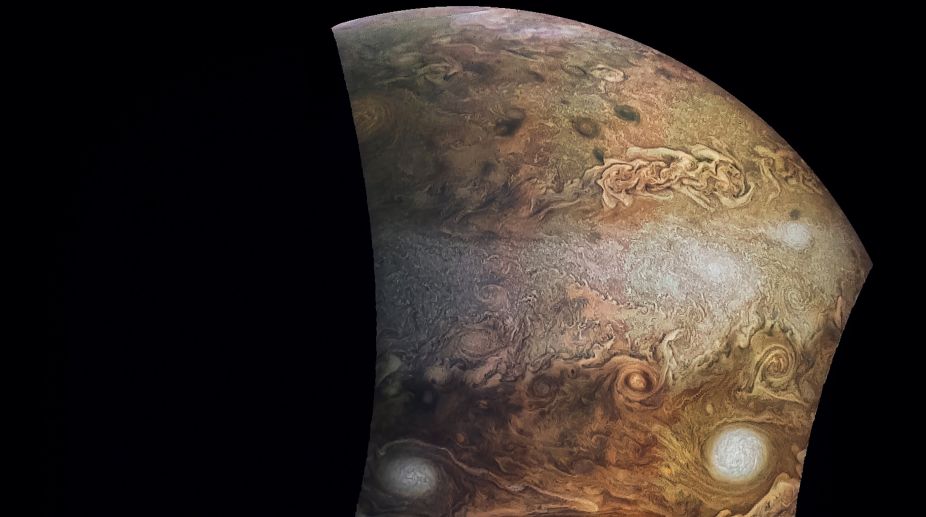NASA mission touches down on Moon aboard Firefly Aerospace lander
The data captured could also benefit humans on Earth by providing insights into how space weather and other cosmic forces impact Earth.

An image acquired by JunoCam on NASA’s Juno spacecraft (Photo: AFP PHOTO / NASA/HANDOUT)
NASA's Earth-bound Gemini North telescope has beamed back a stunning image of Jupiter showing haze particles over a range of altitudes, as seen in reflected sunlight.
As the Juno spacecraft orbits Jupiter, the Gemini telescope is providing high-resolution images to help guide its exploration of the giant planet.
Advertisement
Astronomers at the telescope on Maunakea in Hawaii are revealing "a treasure-trove of fascinating events in Jupiter's atmosphere," said Glenn Orton, principal investigator for the Gemini adaptive optics investigation at NASA's Jet Propulsion Laboratory in the US.
Advertisement
In addition to images using adaptive optics, Michael Wong from University of California, Berkeley in the US is using a longer-wavelength filter on the telescope to look at cloud opacity on the planet.
"These observations trace vertical flows that cannot be measured any other way, illuminating the weather, climate and general circulation in Jupiter's atmosphere," Wong said.
"Events like this show that there's still much to learn about Jupiter's atmosphere," Orton said.
"The combination of Earth-based and spacecraft observations is a powerful one-two punch in exploring Jupiter," he said.
Advertisement